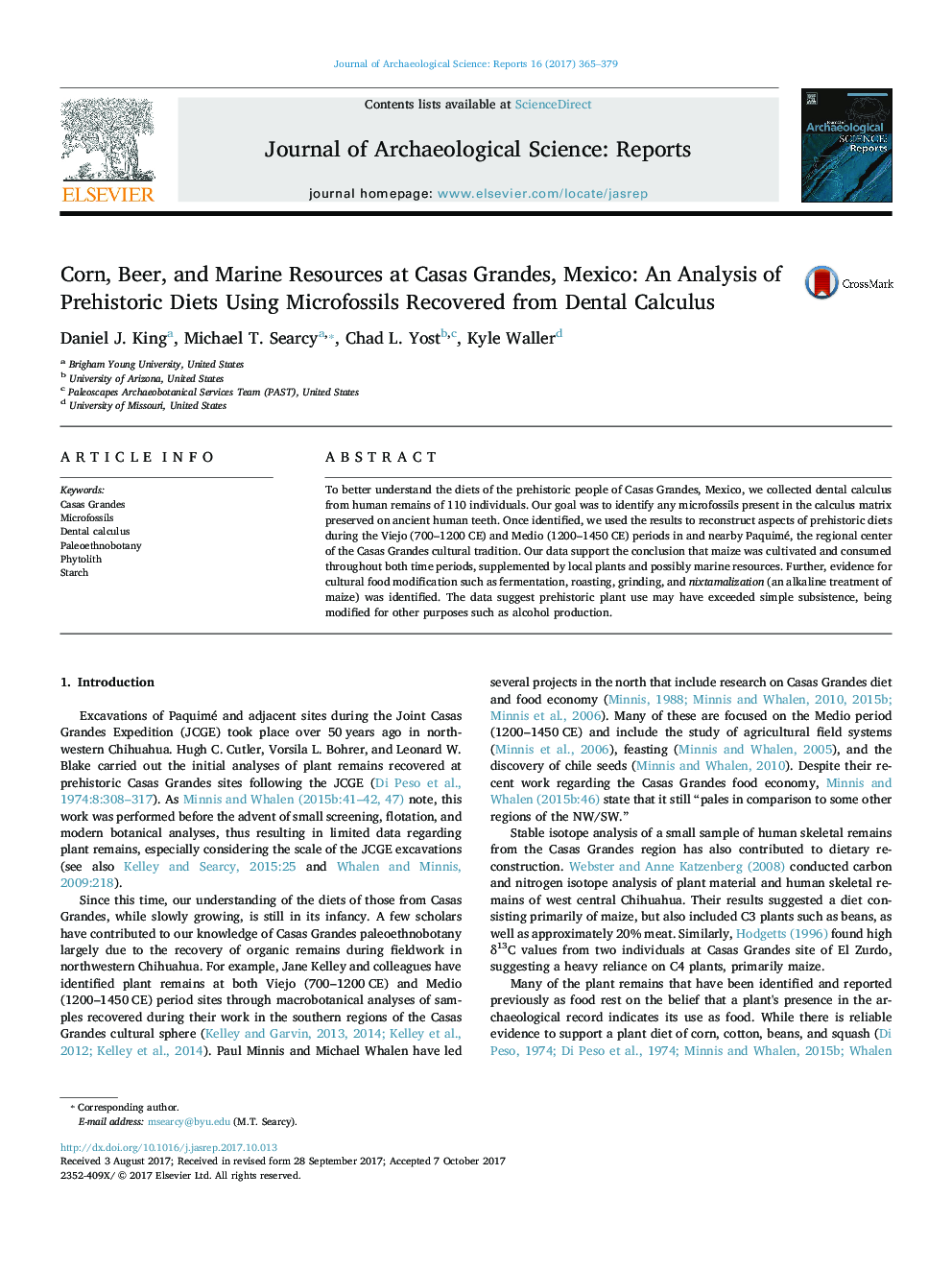| Article ID | Journal | Published Year | Pages | File Type |
|---|---|---|---|---|
| 7445229 | Journal of Archaeological Science: Reports | 2017 | 15 Pages |
Abstract
To better understand the diets of the prehistoric people of Casas Grandes, Mexico, we collected dental calculus from human remains of 110 individuals. Our goal was to identify any microfossils present in the calculus matrix preserved on ancient human teeth. Once identified, we used the results to reconstruct aspects of prehistoric diets during the Viejo (700-1200Â CE) and Medio (1200-1450Â CE) periods in and nearby Paquimé, the regional center of the Casas Grandes cultural tradition. Our data support the conclusion that maize was cultivated and consumed throughout both time periods, supplemented by local plants and possibly marine resources. Further, evidence for cultural food modification such as fermentation, roasting, grinding, and nixtamalization (an alkaline treatment of maize) was identified. The data suggest prehistoric plant use may have exceeded simple subsistence, being modified for other purposes such as alcohol production.
Related Topics
Social Sciences and Humanities
Arts and Humanities
History
Authors
Daniel J. King, Michael T. Searcy, Chad L. Yost, Kyle Waller,
